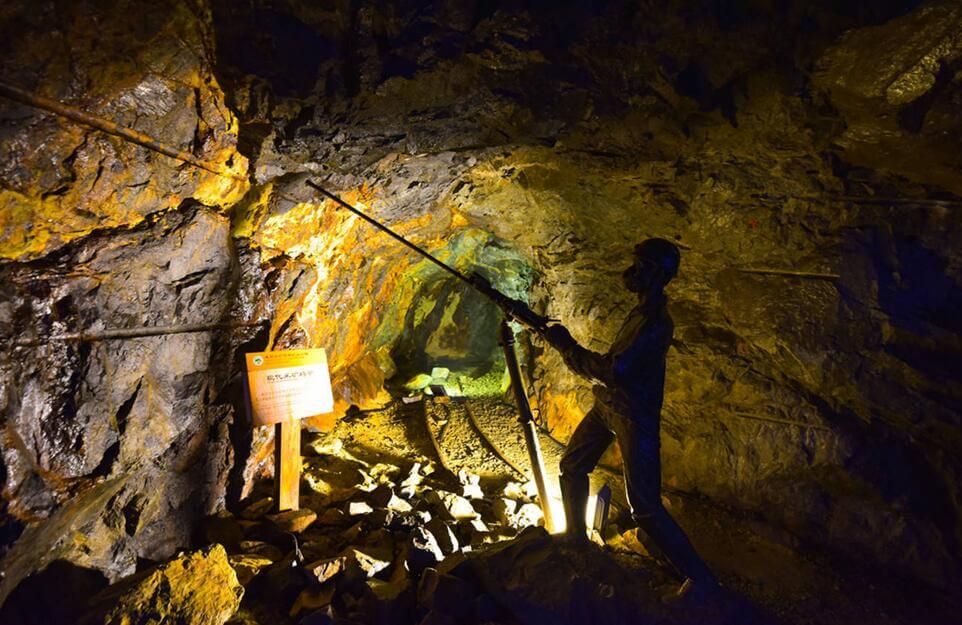We were established as the most specialized mineral processing equipment company since 1985.
China’s gold mining is roughly divided into two types: open-pit mining and underground mining, with underground mining being the main one.
Open-pit mining is generally suitable for mining placer gold and fine-grained gold ore. There are two types of placer gold mining: manual excavation and gold dredging.
The Manual excavation is mostly used in the residual slope accumulation area and the riverbed area with a large amount of coarse gravel for manual excavation of gold-rich strata. Generally, manual excavation of placer gold exists only in some small profitable ore bodies, and the ore body grade is above 0.02 g/m3 and can be profitable.
Gold dredgers are used for large-scale mining in areas with large riverbeds, relatively stable gold grades in gold-bearing layers, where manual digging is challenging to make a profit, or in large-scale gold mining areas affiliated with large gold mining companies. The cost of gold dredgers generally reaches Millions of dollars, so a good gold mining area is required. Due to the lack of large-scale mines, the turbid water caused by gold mining significantly impacts downstream agriculture and fishery, and some placer gold mines are covered by fertile land. The number of gold dredgers in my country has hardly increased and has decreased year by year.
Mining of fine-grained gold mines: Many fine-grained gold mines are open-pit because the gold ore bodies in these mines are well exposed on the surface, and most of them become loose soil or loose rock due to oxidation. The greater the thickness of the ore body, the more mechanized mining is, and in these mines, large excavators are common. Small-scale ore bodies are generally excavated by hand so that the ore bodies can be mined to the greatest extent. For oxidized gold mines, due to the low cost, the mining cut-off grade can be reduced below the cut-off grade stipulated by the state profit.
Underground mining is the primary method of gold mining in my country. Since most of the gold deposits in my country are concealed or semi-concealed ore bodies, it is required to use the method of opening holes in my gold mines. Our country currently has both highly mechanized gold mine tunnels and low and simple small mine tunnels, and the latter accounts for the majority. Underground mining is divided into three types according to the opening angle of the tunnel: flat tunnel, inclined tunnel, and vertical shaft, which are designed for different ore body burial states. The ore body above the underground water table is often mined with a flat tunnel or inclined tunnel. Especially for the ore bodies on the horizon, the ore veins can be mined by common horizontal excavation. At present, the mining depth of gold mines in my country is a little small, and the maximum depth of the well is often more than 1,000 meters, so it is a shaft. Between 300-800 meters. Compared with foreign countries, this also shows that the level of gold mining in my country is still relatively backward. In South Africa, the world’s most advanced gold mine has a straight-hole mining depth of more than 3,000 meters. Because gold mines are buried deep underground, the mining of sulfide mineral-type gold mines requires higher ore grades. The minimum industrial requirements for simple and optional sulfide mines are above 2 grams/ton, and the average grade of mining is above 4 grams/ton to be profitable. The gold grade of complex ores depends on the type and optionality of other associated minerals. High-shale high-arsenic sulfide ores without useful elements require gold content of 7-10 g/t to be mined. As the associated ore of other main minerals, such as the associated gold ore of lead-zinc ore and copper ore, the grade is often below 1 g/t, and it can only be mined as an associated ore when other minerals are profitable.

Underground mining of primary gold deposits must go through three main steps: development, mining and cutting, and mining.
(1) Exploitation: For underground mining of primary gold deposits, some roadways close to the ore body are first excavated from the surface, which is the support system for mining projects such as transportation, lifting, pedestrians, ventilation, drainage, power supply, air supply, water supply, and filling. This project is called pioneering.
(2) Mining standard and cutting: After the development project is completed, the mining preparation work for pedestrians, ventilation, material transportation, rock drilling, ore drawing, etc., in the ore block is called mining standard. Cutting is to open a free surface excavation space for the back-mined ore in the ore block after the mining project is completed.
(3) Mining: Mining from the blocks mined and cut. Mining includes three production processes: ore falling (also known as ore collapse), ore transportation, and ground pressure management. The method of rock drilling and blasting is mostly used. Ore transportation transports ore from the mining point to the loading place outside the mine. Ground pressure management, also known as mining (area) field support, is a variety of technical measures taken to ensure the safety of the goaf.
We provide the best mine processing solution in the industry. We design our products with performance and efficiency, trusted over the years and recognized by many countries. Let’s get you started.

Copyright © 2022, JXSC All rights reserved.
Privacy Policy
Terms & Conditions
